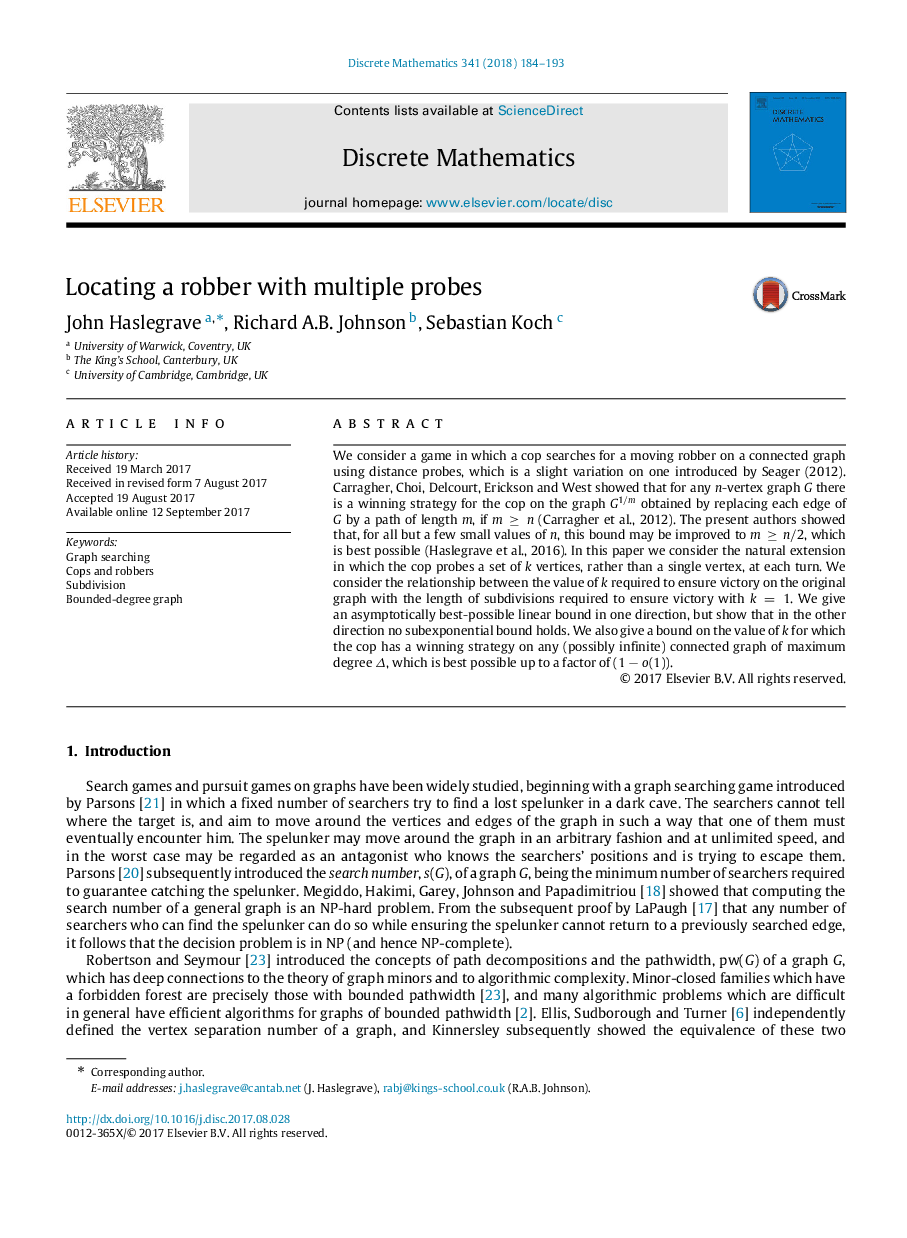| Article ID | Journal | Published Year | Pages | File Type |
|---|---|---|---|---|
| 8903159 | Discrete Mathematics | 2018 | 10 Pages |
Abstract
We consider a game in which a cop searches for a moving robber on a connected graph using distance probes, which is a slight variation on one introduced by Seager (2012). Carragher, Choi, Delcourt, Erickson and West showed that for any n-vertex graph G there is a winning strategy for the cop on the graph G1âm obtained by replacing each edge of G by a path of length m, if mâ¥n (Carragher et al., 2012). The present authors showed that, for all but a few small values of n, this bound may be improved to mâ¥nâ2, which is best possible (Haslegrave et al., 2016). In this paper we consider the natural extension in which the cop probes a set of k vertices, rather than a single vertex, at each turn. We consider the relationship between the value of k required to ensure victory on the original graph with the length of subdivisions required to ensure victory with k=1. We give an asymptotically best-possible linear bound in one direction, but show that in the other direction no subexponential bound holds. We also give a bound on the value of k for which the cop has a winning strategy on any (possibly infinite) connected graph of maximum degree Î, which is best possible up to a factor of (1âo(1)).
Related Topics
Physical Sciences and Engineering
Mathematics
Discrete Mathematics and Combinatorics
Authors
John Haslegrave, Richard A.B. Johnson, Sebastian Koch,
